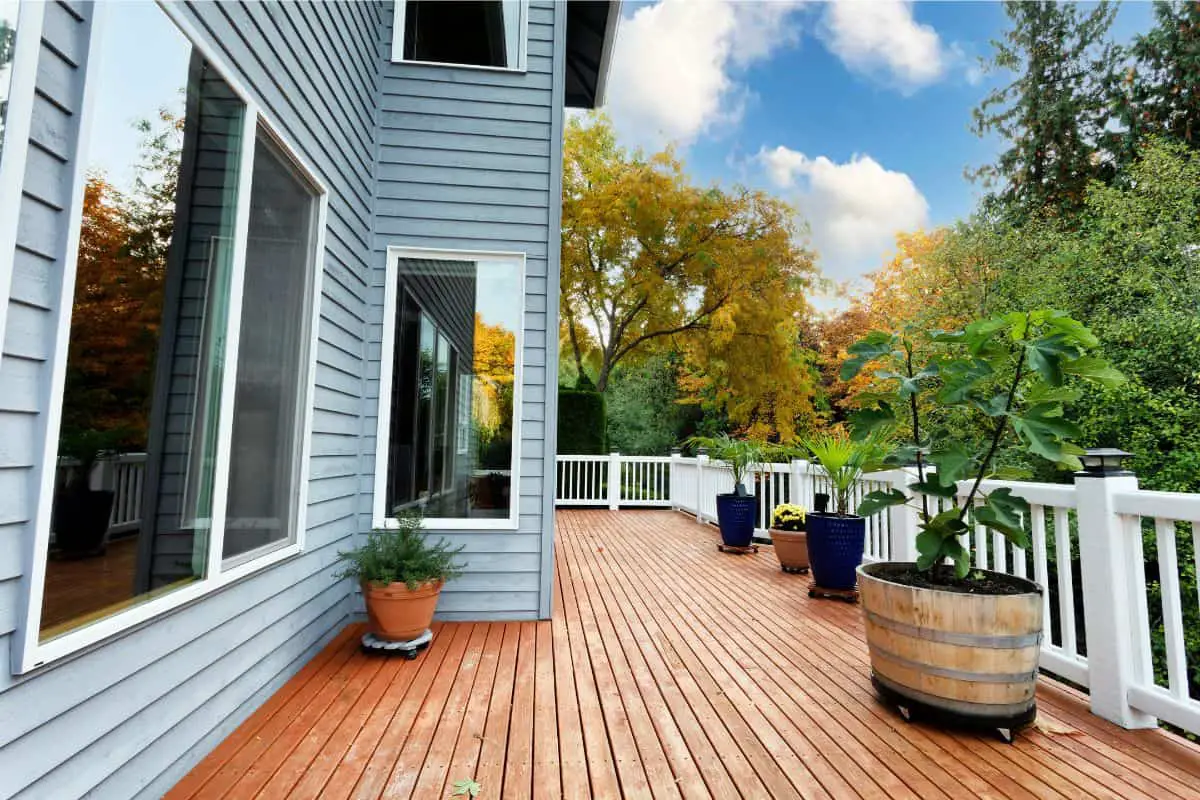When it comes to construction projects that involve direct ground contact, the right choice of wood is crucial for both durability and longevity. In this comprehensive guide, we’ll discuss the best wood for ground contact applications, as well as the factors that make certain types of wood more suitable for these projects than others.
The best wood for ground contact is pressure-treated lumber, specifically treated with preservatives like Chromated Copper Arsenate (CCA), Alkaline Copper Quaternary (ACQ), or Copper Azole (CA). These treatments protect the wood from decay and insect damage, ensuring long-lasting performance even in direct contact with soil and moisture.
Factors to Consider for Ground Contact Wood
Before diving into the specifics of each type of wood, it’s essential to understand the factors that determine the suitability of wood for ground contact applications:
Durability
The wood’s ability to withstand decay, rot, and insect damage is a key factor in determining its suitability for ground contact. Woods that are naturally resistant to decay or have been treated with preservatives to increase their durability are ideal choices for these applications.
Moisture Resistance
Ground contact wood is constantly exposed to moisture from the soil, making it critical to choose a wood type that can resist water damage. This is particularly important in areas with high rainfall or humidity.
Load-Bearing Capacity
The wood you choose should be strong enough to support the weight of the structure it’s being used for. Some woods have a higher load-bearing capacity than others, making them more suitable for specific applications like decking, fence posts, or retaining walls.
Best Timber for Ground Contact Applications
Now that we understand the factors that determine the suitability of wood for ground contact, let’s explore the best options available:
Pressure-Treated Lumber
Pressure-treated lumber is by far the most popular choice for ground contact projects. The wood is treated with preservatives such as CCA, ACQ, or CA, which provide protection against decay and insect damage. Pressure-treated lumber is widely available, relatively affordable, and comes in a variety of dimensions and grades to suit various applications.
CCA-Treated Lumber
Chromated Copper Arsenate (CCA) is a highly effective wood preservative that has been used for decades. CCA-treated lumber is highly resistant to decay, rot, and insect damage, making it an excellent choice for ground contact applications. However, it’s essential to note that CCA-treated lumber is being phased out in some regions due to environmental concerns.
ACQ-Treated Lumber
Alkaline Copper Quaternary (ACQ) is a newer, more environmentally-friendly alternative to CCA. ACQ-treated lumber is highly resistant to decay and insect damage and is less toxic than CCA-treated lumber. This makes it a popular choice for ground contact projects, especially in environmentally sensitive areas.
CA-Treated Lumber
Copper Azole (CA) is another alternative to CCA, offering similar levels of decay and insect resistance. CA-treated lumber is less corrosive to metal fasteners than ACQ-treated lumber, making it an attractive option for projects where metal hardware is used in conjunction with the wood.
Naturally Durable Woods
Wood has long been a popular material for construction and furniture, but not all wood is created equal. Some woods are naturally resistant to decay and insect damage, making them particularly well-suited for ground contact applications without the need for chemical treatments. In this article, we will explore some examples of naturally durable woods and their unique properties, including cedar, redwood, black locust, and Ipe.
Cedar: A Versatile Choice for Outdoor Projects
Cedar is a popular choice for ground contact projects due to its natural resistance to decay, rot, and insect damage. This softwood species possesses natural oils that repel insects and help prevent moisture from penetrating the wood, thereby enhancing its longevity. Cedar’s pleasant aroma and attractive appearance make it ideal for projects like decks, fences, and outdoor furniture. Additionally, cedar is lightweight and easy to work with, which further contributes to its popularity among builders and DIY enthusiasts.
Redwood: Beauty and Durability Combined
Redwood is another naturally decay-resistant wood that’s well-suited for ground contact applications. This softwood species, native to the western United States, is known for its beautiful reddish-brown color and long-lasting performance. Like cedar, redwood contains natural oils that repel insects and prevent moisture absorption, which helps to protect it against decay and rot. These characteristics make redwood an excellent choice for outdoor projects like decks, pergolas, and fences, where its striking appearance can add an elegant touch.
Black Locust: A Dense and Durable Hardwood
Black locust is an extremely durable and dense hardwood that is naturally resistant to decay, rot, and insect damage. This North American native tree produces wood with excellent load-bearing capacity and resistance to moisture, making it an excellent choice for ground contact applications such as fence posts, retaining walls, and decking. In addition to its structural properties, black locust wood has an attractive yellowish-brown color that weathers to a silvery-gray over time, further adding to its appeal for outdoor projects.
Ipe: The Brazilian Walnut with Impressive Qualities
Ipe, also known as Brazilian walnut, is an incredibly dense and durable hardwood that is naturally resistant to decay and insect damage. This tropical wood species is found in Central and South America and is renowned for its strength and longevity. Ipe’s high load-bearing capacity and resistance to moisture make it a popular choice for decks and other outdoor structures in direct contact with the ground. Ipe wood has a rich, dark brown color that, with proper care, can maintain its beauty for decades.
When it comes to selecting wood for outdoor projects, it’s essential to consider the natural properties of different species. Woods like cedar, redwood, black locust, and Ipe offer inherent resistance to decay, rot, and insect damage, making them excellent choices for ground contact applications. By choosing one of these naturally durable woods, you can create long-lasting, beautiful outdoor structures that require minimal chemical treatment and upkeep.
Untreated Woods
While untreated woods are generally not recommended for ground contact applications due to their susceptibility to decay and insect damage, there are situations where they may be appropriate. For example, if you’re working on a temporary structure or a project where the wood’s appearance is more important than its longevity, untreated wood may be an acceptable choice.
Keep in mind that you’ll need to take extra precautions to protect untreated wood from moisture, such as sealing it with a water-resistant finish or using a moisture barrier between the wood and the ground.
Best Practices for Using Wood in Ground Contact Applications
When using wood in ground contact applications, it’s crucial to follow specific best practices to ensure the longevity and durability of your project. By taking these steps, you can help protect your wooden structures and minimize the risk of decay, rot, and insect damage.
- Choose the right wood: As discussed earlier, it’s essential to select pressure-treated lumber or naturally durable woods like cedar, redwood, black locust, or Ipe. These woods are resistant to decay, rot, and insect damage, making them suitable for ground contact applications.
- Use appropriate fasteners: Opt for corrosion-resistant fasteners, such as stainless steel or hot-dipped galvanized hardware, to prevent corrosion and extend the life of your project. These fasteners are designed to withstand harsh outdoor conditions and will help maintain the structural integrity of your wooden structures.
- Ensure proper drainage: Make sure that water can drain away from the wood, preventing it from sitting in standing water and accelerating decay. This can be achieved by grading the soil around your project to encourage water flow away from the structure or installing drainage systems, like a French drain, to help redirect water.
- Maintain your wood: Regularly inspect your wood for signs of decay or damage, and promptly address any issues that arise. Apply a water-resistant sealant as needed to protect the wood from moisture. Sealants should be applied according to the manufacturer’s instructions and reapplied periodically to maintain their effectiveness.
- Consider a moisture barrier: In some cases, it may be helpful to use a moisture barrier, like gravel or a plastic sheet, between the wood and the ground to prevent direct contact with moisture and soil. This added layer can help protect your wooden structures from constant exposure to dampness, reducing the risk of decay and rot.
- Design with ventilation in mind: Incorporate adequate ventilation into your project design to allow air circulation around your wooden structures. This will help keep the wood dry, reducing the likelihood of moisture-related issues.
- Avoid burying wood: Whenever possible, avoid burying wood in the soil, as this can accelerate decay. Instead, consider using concrete or masonry to provide support for your wooden structures, such as posts or beams.
By following these best practices, you can help ensure the longevity and durability of your wooden structures in ground contact applications. Choosing the right wood, using appropriate fasteners, ensuring proper drainage, maintaining your wood, and considering moisture barriers and ventilation can all contribute to the successful completion and long-lasting performance of your outdoor projects.
Conclusion
Selecting the best wood for ground contact is essential for the durability and longevity of your outdoor construction projects. Pressure-treated lumber, such as CCA, ACQ, or CA-treated wood, is a popular choice due to its resistance to decay and insect damage. Alternatively, naturally durable woods like cedar, redwood, black locust, and ipe can also provide excellent performance in ground contact applications. By following best practices for installation and maintenance, you can ensure that your wood projects will last for many years to come.

